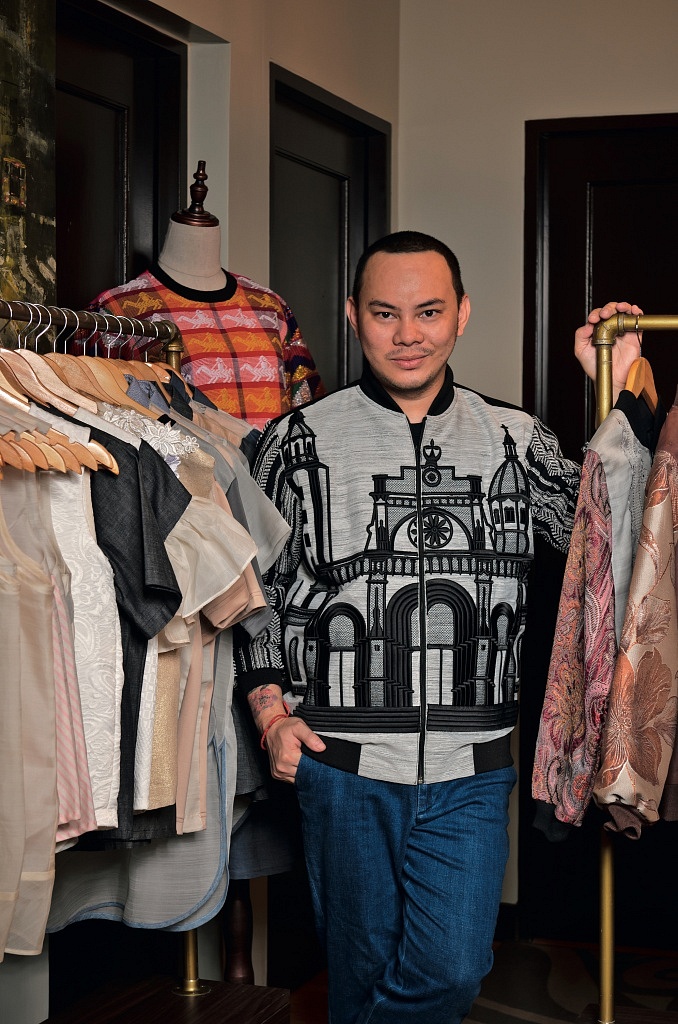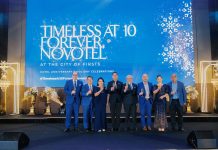
A penchant for traditional fashion isn’t something commonly seen among millennials, especially with global fashion and overseas travel opportunities becoming more and more accessible and affordable. Then, Iloilo-bred designer Jor-El Espina is not your average millennial.
The designer has always been fond of Filipiniana, having been accustomed to such fashion growing up with his elders and in a traditional family. “I’ve always been fascinated with the fabrics. My great grandmother had a cabinet full of patadyong. They were so beautiful. So even when she was in the city, even if she was in her daster, she would wear her patadyong. After she passed away, I searched for the fabrics before I started designing. I told myself, why not revive that look but in a modern way?” the designer says.
Espina’s first foray into fashion was bridalwear, focusing on intricate details like lace and embroidery with a Filipino touch. Also an advocate of upcycling, he keeps excess fabrics and repurposes lace by combining different patterns and colors to create unique designs and embellishments.
From his first stint in 2007, Espina’s bridal line has been growing steadily, despite his young age. With his unique aesthetic and light, approachable demeanor, Espina has become a household name in his hometown.
But his pursuit for success didn’t stop there, and eventually, Espina decided to try his luck in Manila. “It took me a while until I finally decided to go to Manila. It was in 2016. In 2017, I joined ArteFino and tested the waters. I introduced the ‘bomberong’ and to my surprise, we sold every single piece,” he recalls.
The bomberong is esentially a bomber jacket and barong in one—Espina’s pilot product for his streetwear line. “It all started when I wanted to wear something unique to our Filipino-themed Christmas party. So I thought of incorporating the details of a barong into a bomber jacket. This was back in Iloilo.
“Although I tried to sell them back home, the market didn’t really receive them well. Eventually, a friend told me to consider selling it in Manila. I was hesitant at first, worrying it might turn out like the first time.
“During ArteFino, even the old pieces got wiped out! It was initially designed for men, but a lot of female buyers approached us and purchased multiple designs. People found the idea refreshing—it was unlike anything they had seen or worn before,” he says.
The bomberong eventually attracted a niched market of professionals, especially in the public sector. Now, his jackets are being worn as a uniform by politicians in the Congress and Senate, even during official trips and businesses, because of their unique yet wearable take on modern Filipiniana.
The designer now works closely with communities and women weavers to produce his own fabrics and patterns. But Espina’s take on social entrepreneurship doesn’t end with merely commissioning weavers or purchasing finished products. Instead, he advocates educating them on modern trends and styles to help sustain the industry.
“More and more designers and entrepreneurs are tapping local micro-industries like the weavers and tribes, but more as a marketing strategy rather than a sustainable advocacy. I prefer to work with them and help them develop their products because that’s the main problem of the weavers. They have the skills but admittedly, not the taste. Hindi nila alam na ’pag pinaghalo ang red at green ay mukhang Christmas ’yun—but that’s normal for them. With my products and designs, I always direct them on the colors and patterns to make, by hand. That adds premium on our products,” he explains.
Espina’s bomberong also caught attention when Miss Universe 2018 Catriona Gray, who opted to wear Filipino designs, wore it during one of her first official trips abroad.
It’s not unlikely that other designers will follow suit, especially with the success of Espina’s line. “That’s why I always have and want to innovate. I try to come up with a different concept for every pop-up or show I participate in. First was the classic bomberong. Recently, I did a fully woven, mixed-pattern series in bright colors. I’m also doing jackets with embroidery inspired by local churches. I still create the classics but I always want to offer more,” he says.
He adds, “We have the most intricate and most beautiful textiles. Even though there are similarities with, say, Thai or batik fabrics, if you look closely, iba pa rin talaga ang Pinoy. But Filipinos are more Western in their fashion choices, especially for everyday wear. I want to bring back that sense of nationalism and love for our beautiful culture, so I make clothes that will make people appreciate our traditions, and not just for formal occasions—even if that means incorporating them into basic streetwear.”
Portrait by Kai Huang






































